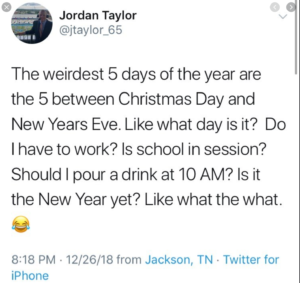This week between the holidays is just awkward, right? Are you feeling a little sluggish from gobbling up too many holiday treats? Not sure what day it is? Running out of shows to watch on Netflix? Same here. So, this might be a good time to take on a project that doesn’t require you to think too hard. That is, to create a home care or senior living content inventory.

What’s that, you might be asking? We understand. It’s the rare senior living or home care provider that actually has this system in place.
In simple terms, a content inventory is a process for tracking what topics you’ve written about, when you’ve published them, and where.
Having one will help you consistently write about evergreen senior care topics, while not overlooking seasonal/trending issues you want to tackle, too.
Ready to learn more? In the interest of the post-holiday brain blahs, we’ll share the easy steps we take to log and update content in a super short post.

How to Create a Senior Living Content Inventory
Our system is just three main steps:
- Content master: We have a master content spreadsheet for every client. We go old school and set it up in Excel with columns for entering publication dates. It has tabs for evergreen topics, seasonal discussions, trending issues, and more. We update it with new ideas to write about every quarter. It’s here that we track what topics we write about and when. It’s very helpful as we develop quarterly editorial calendars.
- Client templates: Every piece of content we write for a client goes on a template before it’s delivered. We archive copies and save them to our content manager. The template has the month, week, title, audience, tags, and meta description. Once a client publishes it, we try to pull the URL and add it to the template.
- Trello: We’ve been using Trello to store our archived articles forever! We love how easy it is to use and access. We can search by client name, topic, keyword, etc. Because there are so many evergreen topics we need to write about over and over in the senior care industry, Trello is a lifesaver. For example, when it’s time to write about the early warning signs of dementia again, we can head to Trello and pull the client’s previous articles. We can review everything we’ve written for the client on the topic. That helps us figure out a new angle for the next article.
Make sense? Drop us a note if you have any questions! We’ll be happy to try to help…
